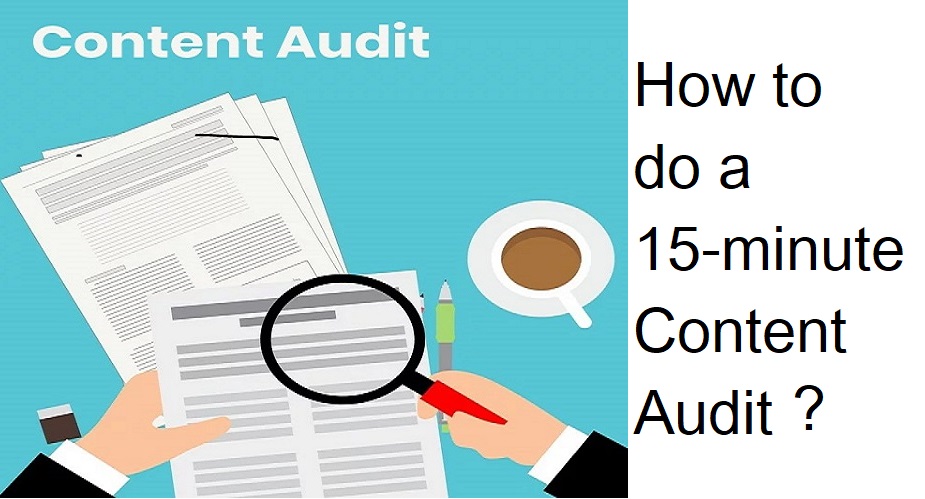
To build and retain an audience, you need to publish high-quality content consistently. Also, you must consider that your old content might not resonate with your current audience. A content audit involves various steps to analyze all the information on a website to assess and enhance its quality.
Why should you perform a content audit?
When you do a successful content audit, you can expect more organic traffic to come your way as you’re cleaning up content that doesn’t give much traffic and improving pieces of content that have good potential to gain traffic. According to a study conducted by BrightEdge, organic search comprises 51% of all web traffic and also drives 40% of revenue.
A content audit helps you understand your visitor’s behaviour on the website or why your marketing efforts aren’t as effective as you thought them to be. Conducting an audit also helps in identifying any cracks in your SEO activities so that you can make the necessary changes and get the traffic that you deserve.
This article will go over a few factors to help you increase organic traffic with a simple 15-minute Content Audit.
Make a List of All Content Pieces
Before doing anything, you need to know what content you already have in stock. You can start by collecting all the URLs and putting them in a spreadsheet. You can do this manually if you have a small site; otherwise, you can use content extraction tools.
Catalogue Content
After collecting all the URLs, you need to sort them out based on various criteria mentioned below.
- The type of content
- Content format
- Number of words
- Buyer’s Journey Stage (Awareness, Consideration, Decision)
- Date of publication/modification
- Author Bio (If you have several writers)
- Metadata (Title, meta description, H1)
Finally, make columns with the metrics to collect data for each web page.
Define Goals and Metrics
You must determine your business goals if you wish to make changes ensuring a strong impact. So the question you need to ask yourself is, ‘what is your goal behind the content audit?’
Improve SEO Results
Figure out the pieces of content that you should remove and the ones you should update.
Finally, identify the kind of content that receives the most engagement so you can take advantage of it efficiently.
Increase Audience Engagement
If you know what topics interest your audience, you can post more content that resonates with them. Knowing what type of content engages your community can aid in getting more organic traffic, as you’ll have the knowledge to perfectly cater to your audience.
Improve Conversion Rates
For this, you need to understand which pages provide the best user experience for your visitors. You also need to find the best performing content that generates the most leads. Additionally, you must determine the most efficient forms of content for each stage of the Buyer’s Journey.
When you clearly define your goals, you have a better understanding of the steps required to reach those goals. With the goals defined, you can match them with certain content marketing metrics, like:
- Engagement metrics: Likes, shares, mentions, comments, etc.
- User behavior metrics: Pageviews, bounce rate, average duration per session, etc.
- Sales metrics: Number of leads, ROI, conversion rate, etc.
- SEO metrics: Backlinks, organic traffic, keyword rankings, dwell time, etc.
If you want to find out what topics interest your audience the most, you should consider user behaviour and engagement metrics. If you wish to know your performance in terms of SEO, you should check the number of backlinks, keyword volume, and your rankings on search engines.
After you’ve collected all the data you need, defined your goals, and understood what needs to be done, you can analyze the data with certain SEO tools.
By connecting your Google Analytics and Google Search Console accounts to the content audit tool, you can boost the level of data and get an in-depth analysis of your website. You can find other metrics like page views, the average session duration, and the bounce rate, along with other metrics.
By using these auditing tools, you can understand the pieces of content that are performing the best in terms of engagement, traffic, and conversion. You can also estimate how effective your content was in achieving your marketing goals.
Some tools allow you to get detailed information on file types, metadata, and other details about the page like images, videos, documents, etc. There are content auditing tools that even let you analyze user behaviour, which helps when you want to know which content piece is performing well and which isn’t.
Assess Content (Keep, Update, Delete)
By using your collected data and the metrics mentioned in the earlier section, you need to assess every piece of content according to the goals. After that, you can sort them into these different categories: Keep – Update – Delete.
Keep: If the content is doing well and stays relevant, there isn’t much need to update it. You reuse the content as part of your Content Marketing strategy instead.
Update: Performing a content audit helps you find web pages that are not performing well. Review the content and see if you can make it more efficient. You might also find content that has outdated information, which you can revise and update.
Delete: If you can’t improve your content or you feel that updating it would take a lot of effort, a solution would be to remove that piece from your website. You might also have some articles or landing pages that were created for seasonal marketing campaigns. If you’re not updating them or planning to use them again, you can delete them.
Make a Strategy
(Source: aspedmart.wixsite.com)
You’ve listed out the URLs that need to be changed, defined your goals, understood your metrics, analyzed and assessed your data, so now it’s time to make an effective strategy to increase the overall traffic.
The plan of action should include your goals and the concluding analysis. Here are some actionable tips that you can use for your content audit:
Reuse/Rewrite/Refresh Content: Try to combine different content pieces to form a new piece altogether. Alternatively, you can refresh old articles by adding more relevant information to the existing piece. Additionally, if there are blog posts that aren’t performing well, you can rewrite them and add new, relevant information.
Structure Content: A clear structure can help bots, as well as users, better understand your content. A well structured “How to” article is more likely to rank for Featured Snippets than an unstructured article.
Update CTAs: Outdated banners on your blog or web pages can be replaced with relevant offers to reactivate your Content Marketing funnel and improve the conversion rate.
Add Videos/Images: Videos can drive up to 157% of organic traffic to your website from search engines, and users would spend more time on web pages if it contains a video. Additionally, with images, you make your content more engaging and attractive. Incorporating videos and images on a web page can increase the chances of appearing in the SERP features.
Optimize Metadata and Internal Linking: Rewrite your titles, meta descriptions, and any H1’s that you feel are subpar. Integrate other keywords and make it attractive to users.
Check for Any Issues: Websites have “health,” and it can have a significant impact on SEO. You should pay attention to the health of your website in case any warning signs show up, like broken links; that way, you’ll be ready to rectify it.
Use 301 Redirects: For web pages that were removed from your website, it’s advised to use 301 Redirects, which allow you to avoid “not found” pages and improve the overall user experience.
Inform Google: You can make all the changes you want, but if you don’t update and inform Google, you’ll be losing out. You can do this by using Google Search Console. The “Fetch as Google” feature lets you submit recently-updated web pages to Google’s index.
Track Results
You can’t implement these changes blindly and hope for the best because that’s not how SEO works. If you don’t track the changes that you’ve implemented, you wouldn’t know if you’re on the right or wrong path. There are content tools that make tracking results much easier, such as Google Analytics and Google Search Console.
Conclusion
A content audit isn’t a one-time process. It’s a practice that must be incorporated into your websites and other marketing channels to ensure that everything runs smoothly.
By carefully cataloguing your existing content and assessing the data that you’ve gathered for each URL, you can make better marketing decisions that will help you cut costs, save time, grow your brand, and improve your advertising ROI.
Consistent adjustments should be made to make sure you stay ahead of your competitors. Performing these audits a couple of times in a year is a good way to follow up on these adjustments.
Digital Web Services (DWS) is a leading IT company specializing in Software Development, Web Application Development, Website Designing, and Digital Marketing. Here are providing all kinds of services and solutions for the digital transformation of any business and website.










